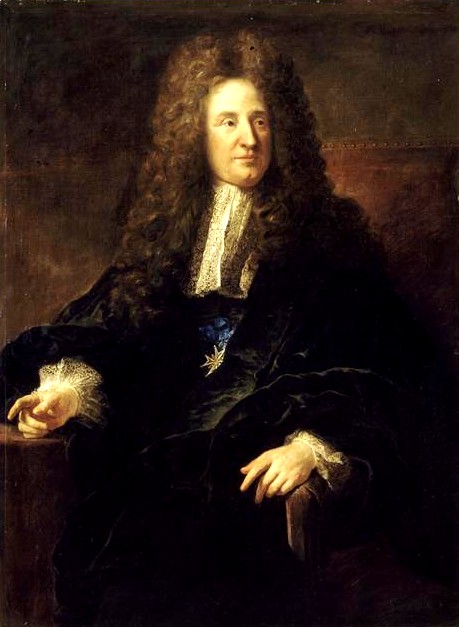
FEATURE image: “Jordi Savall à l’Arsenal.” by iJuliAn is licensed under CC BY-NC-SA 2.0.
Le Concert des Nations is an orchestra created in 1989 that performs orchestral, choral, and symphonic music with period instruments. Founded by Catalan maestro and viola de gamba virtuoso, Jordi Savall (b. 1941), Le Concert de Nations performs a wide ranging repertoire from the Baroque period (16th-17th centuries) to the Age of Enlightenment (18th century) and into the Romantic period (19th century). Their name, Le Concert des Nations, refers to a musical work by French Baroque composer and musician, François Couperin (1668-1733).


Messe et Motets pour la Vierge by Marc-Antoine Charpentier (1702):
Canticum in honorem Beate Virginis Mariae inter hominess et angelos (H.400)
In Nativitatem Domini Canticum: nuit (H.416)
Stabat Mater pour des religieuses (H.15)
Litanies de la Vierge a 6 voix et 2 dessus de violes (H.83)
Missa Assumpta Est Maria (H.11a)
What is Charpentier’s Messe et Motets Pour La Vierge about?
Marc-Antoine Charpentier (French, 1643-1704) was a prolific composer who had a diverse list of clients in Paris and the composer continually adapted his work. His religious music is complex for its musical relationships and its theological structures.
Starting in the sixteenth century one of the Catholic Church’s responses to Protestant reformers during the so-called “Catholic Counter Reformation” was the renewal of its devotion to the Virgin Mary.
Charpentier’s composition of Messe et Motets Pour La Vierge is not trivial. It supports varied and comprehensive expressions of Marian devotion. This includes a didactic dialogue in her honor (Canticum in honorem Virginis Mariae Beatae homines…); a sorrowful Virgin at the foot of the Cross (Stabat mater dolorosa); a litany of the Virgin; and a great Mass in her honor for God’s glory (Assumpta est Maria…).
Added to the theological variety of musical forms are its different musical styles for soloists, chorus and orchestra.
Charpentier’s final product is sublime and leads directly to the Mass worship on the Feast of Mary’s assumption into heaven which is August 15.

The crown of France being offered to the young Louis (future King Louis XIV) by the Virgin Mary while his mother (Anne of Austria) and brother (Philippe, Duke of Anjou) attend. Public Domain.
Charpentier’s Messe and the Palace of Versailles
Intriguing facts coincide in this live early music performance of the Messe et Motets Pour La Vierge (Mass and Motets for the Virgin) by Charpentier and the Palace of Versailles in whose Royal Chapel it was recorded in 2007. The ninety-one-minute music video in this post is directed by Olivier Simonnet and broadcast by MEZZO.
In the Jules Hardouin-Mansart-designed chapel of 1699 (completed in 1710) is performed some of the greatest music ever composed by early music ensemble Hespèrion XXI and period instrument orchestra Le Concert des Nations led by Jordi Savall.
Fourteen miles west of Paris, there are many ways to visit Versailles’ château and grounds as it is very big and expansive. The château has over two thousand windows (exact count: 2,153).
Square feet of Versailles compared to Michael Jordan’s Chicagoland mansion
In 2012 when former Chicago Bulls superstar Michael Jordan sold his house he listed it at $29 million. For that price the residence boasted 32,683 square feet on seven acres near Chicago.
What about Louis XIV’s Versailles? The royal château is over 720,000 square feet on two thousand acres. The visitor who wanders the 30 rooms of Jordan’s house could wander Versailles’ twenty-three hundred rooms.


Versailles has over 6000 paintings and 5000 pieces of furniture
To be expected, there is much to see inside the château: by one count, 6,123 paintings, 1,500 drawings, 15,000 engravings, 2,000 sculptures and 5,000 pieces of furniture.
Most of the palace was built in the 1670s. It is interesting that Charpentier’s Messe et Motets Pour La Vierge is performed in its Royal Chapel. Composed in 1702, this brilliant new liturgical music of the time is hosted in a architectural space that at the time was also brand new. It was completed in 1710 by the First Architect to the King’s brother-in-law because Mansart died in 1708 at nearby Marley-le-Roi.


Performance Vocalists and Musicians
Emmanuel Bardon, countertenor
Yves Bergé, bass
Pascal Bertin, countertenor
Daniele Carnovich, bass
Raphaële Kennedy, soprano
Jean François Novelli, tenor
Jordi Ricart, baritone
Arianna Savall, soprano
Judit Scherrer-Kleber, mezzo-soprano
Elisabetta Tiso, soprano
Luis Vilamajo, tenor
Jordi Savall, pardessus de viole
Guido Balestracci, bass viol
Bruno Cocset, bass violin
Imke David, haute-contre de viole
Xavier Diaz-Latorre, theorbo
Luca Guglielmi, organ and harpsichord
Marc Hantai and Charles Zebley, transverse flutes
Xavier Puertas, violone
Joanna Valencia, tenor viol






